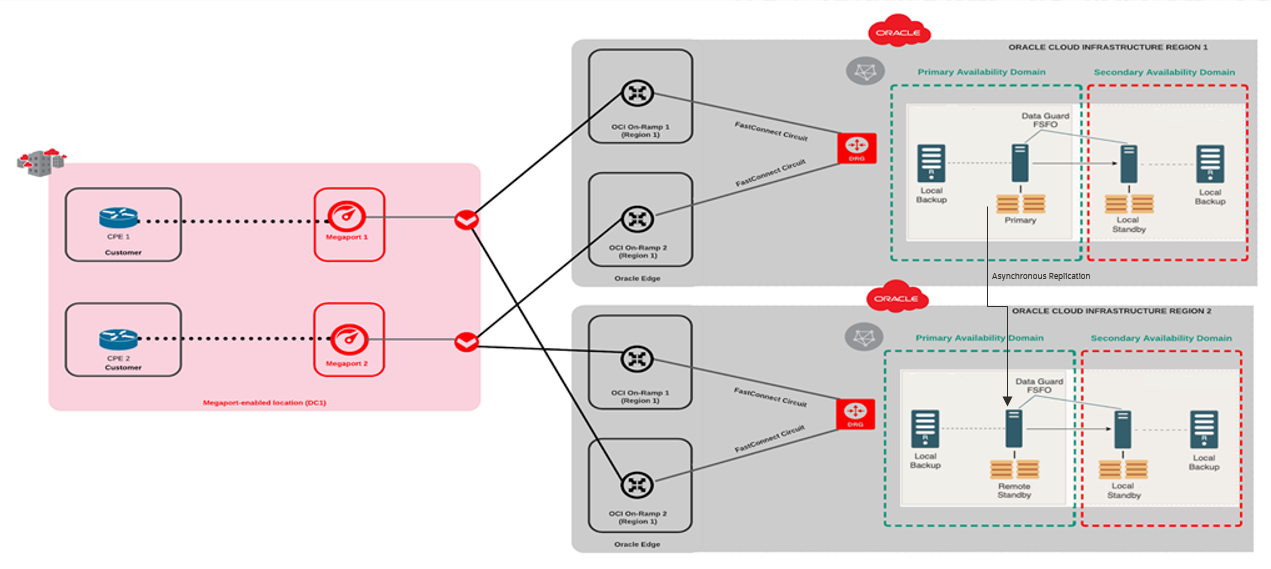In the first two blogs of our series on Oracle Maximum Availability Architecture (MAA), we covered our Bronze Architecture, which used a single instance of an Oracle Database to provide redundancy for development and test environments, and our Silver Architecture, which is designed to secure business-critical applications tested diligently via Chaos Engineering techniques, reducing downtime for local failures and most commonly planned maintenance activities such as database patching.
In our webinar on July 13, we discussed how Oracle designed the various MAA tiers for high availability, scalability, and fast failover so that you can ensure data access, prevent data loss, minimize downtime, and reduce administrative tasks in the event of an unexpected service interruption.
This blog post will cover our MAA Gold and Platinum tier solutions. The Gold MAA tier is well suited for service-level requirements that require very little downtime and zero data loss. At the same time, our MAA Platinum tier reference architecture can provide zero downtime for outages and planned maintenance activities.
These reference architectures provide high availability and comprehensive data protection for all types of unplanned outages, including data corruption, database failures, and site outages. The Platinum MAA tier architecture builds on the Gold MAA tier architecture by adding Oracle GoldenGate replication to eliminate downtime for migrations and application and database upgrades with an active-active or active-passive configuration.
With Oracle MAA, you can build a resilient network that will prepare you for the next business continuity incident while staying within your IT budget.
The reference architectures in this blog series use Oracle Cloud Infrastructure (OCI) FastConnect and our partner Megaport, a leading global Network as a Service (NaaS) provider. Here are some terms you’ll see referenced in these multicloud architectures:
OCI Fast Connect
- Region – An OCI region is a localized geographic area that contains one or more data centers, called availability domains. Regions are independent of other regions, and vast distances can separate them (across countries or even continents).
- Availability Domain – An availability domain is one or more data centers located within a region. Availability domains are isolated from each other, fault-tolerant, and very unlikely to fail simultaneously.
- Virtual Cloud Network (VCN) – A VCN is a virtual, private network that you set up in Oracle data centers. It closely resembles a traditional network, with firewall rules and specific types of communication gateways that you can choose to use. A VCN resides in a single OCI region.
- Dynamic Routing Gateway (DRG) – The DRG is a virtual router that provides a path for private network traffic between a VCN and a network outside the region, such as a VCN in another OCI region, an on-premises network, or a network in another cloud provider.
- FastConnect – OCI FastConnect provides an easy way to create a dedicated, private connection between your data center and OCI. FastConnect provides higher bandwidth options and a more reliable networking experience when compared with internet-based connections.
Megaport
- Software-Defined Network (SDN) – Megaport’s on-demand, global Software Defined Network (SDN) enables fast, flexible, and secure connectivity to the world’s top cloud providers, including Oracle Cloud, Amazon Web Services (AWS), Microsoft Azure, and Google Cloud, across 700+ locations in North America, Asia-Pacific, and Europe.
- Port – A Port is a high-speed Ethernet interface (1 Gbps, 10 Gbps, and 100 Gbps) that connects to the Megaport SDN.
- Virtual Cross Connect (VXC) – With a Port configured, you can create Virtual Cross Connects (VXC) to connect to Oracle services on the Megaport network. A VXC is a private point-to-point Ethernet connection between an A-End (your Port) and a B-End (for example, OCI FastConnect).
Let’s look at how the Gold and Platinum tiers in Oracle Maximum Availability Architecture work with Megaport’s services.
Oracle Maximum Availability Architecture – Gold Multicloud Architecture

The Oracle MAA Gold Architecture is designed for databases for mission-critical workloads, meaning any significant periods of downtime or data loss cannot be tolerated. This architecture provides comprehensive data protection for disaster recovery by physically replicating your primary database to a standby database to another region for maximum redundancy.
In the example in the diagram above, the architecture uses HA Clustering via Oracle Real Application Clusters (RAC) plus a backup, using diverse Ports at the customer’s data center location. The customer can create four virtual cross-connects (VXC’s) over Megaport’s private, fully redundant network, which will connect to Oracle redundant routers at the FastConnect location.
This configuration will create a fully redundant High Availability pair on both the Megaport and Oracle Cloud networks. In addition, In order to ensure absolutely zero data loss, the configuration includes both local standby RAC and remote standby RAC database deployments. Therefore, we have primary and secondary Availability Domains in each Oracle region with synchronous replication between the primary and local standby databases being handled by Oracle Active Data Guard. The second region will also be configured with remote standby RAC system utilizing asynchronous replication via Active Data Guard to ensure the application is protected from a region-wide outage event such as a natural disaster or large-scale power outage without impacting the performance of the Primary RAC. Each virtual connection will be a standalone Border Gateway Protocol (BGP) session between your on-premises resources and your Oracle Databases in OCI.
The Gold Architecture creates much greater redundancy for your database, providing comprehensive data protection. It should also be noted that these features are built into Autonomous Database (via Autonomous Data Guard) and other Oracle Database Cloud Services.
Oracle Maximum Availability Architecture – Platinum Multicloud Architecture

The Oracle MAA Platinum Architecture builds on the Gold MAA Tier by eliminating downtime for outages and planned maintenance. For extremely critical always-on applications, the Platinum Architecture uses Oracle GoldenGate to support active-active bi-directional configuration (active-passive is also an option). The application users on each system can change two sets of identical data, but conflict resolution issues must be considered. In short, your databases are asynchronously replicated, providing two primaries while still benefiting from all of the disaster recovery elements (i.e., Active Data Guard with Application Continuity configured) of the gold MAA tier via local standby RAC deployments. If an outage impacts one Real Application Cluster, your second replicated Real Application Cluster remains active and up to date. At the same time, a role transition brings up the standby RAC environment in that region, quickly returning the configuration to active-active.
In the example in the diagram above, the architecture uses HA Clustering via Oracle RAC plus a backup, using diverse Ports at diverse data center locations. The customer can create eight virtual cross-connects (VXC’s) over Megaport’s private, fully redundant network, which will connect to Oracle redundant routers to multiple Oracle Regions.
This configuration will create a fully redundant High Availability pair on both the Megaport and Oracle Cloud networks. The MAA configuration will include Primary and Secondary Availability Domains within two Oracle Regions similar to the gold MAA tier but with two active-active or active-passive primary RAC databases in addition to local standby RAC databases in each region. Each virtual connection will be a standalone Border Gateway Protocol (BGP) session between your on-premises resources and your Oracle Databases in OCI.
The Platinum Architecture creates maximum data protection for your mission-critical applications. All of these features are built into Autonomous Database and other Oracle database cloud services except for Oracle GoldenGate, which will need to be configured manually in a HA configuration.
Oracle Maximum Availability Architecture
In these uncertain times of heightened cybersecurity risk, business continuity keeps CIOs up at night like never before. We hope that Oracle MAA best practices combined with Megaport will give you options to build resilient multicloud networks and application systems at the appropriate level of data protection for your end-users while keeping your IT budget in check.
